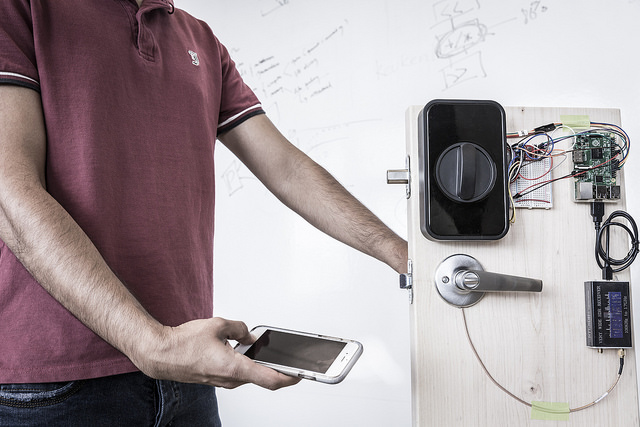Send Passwords Securely Through Your Body Instead of Wi-Fi


Rather than rely on easy-to-hack Wi-Fi or Bluetooth signals, researchers have developed a system that uses the human body to securely transmit passwords.
Computer scientists and electrical engineers have devised a way to relay the signal from a fingerprint scanner or touchpad through the body to a receiving device that is also in contact with the user. These "on-body" transmissions offer a secure option for authentication that does not require a password, the researchers said.
"Let’s say I want to open a door using an electronic smart lock," said study co-lead author Merhdad Hessar, an electrical engineering doctoral student at the University of Washington. "I can touch the doorknob and touch the fingerprint sensor on my phone and transmit my secret credentials through my body to open the door, without leaking that personal information over the air." [Body Odor and Brain Waves: 5 Cool New ID Technologies]
The system uses signals that are already generated by fingerprint sensors on smartphones and laptop touchpads, which have thus far been used to receive input about the physical characteristics of a user's finger.
"What is cool is that we’ve shown for the first time that fingerprint sensors can be re-purposed to send out information that is confined to the body," study senior author Shyam Gollakota, an assistant professor of computer science and engineering at the University of Washington, said in a statement.
The researchers devised a way to use the signals that are generated by fingerprint sensors and touchpads as output, corresponding to data like a password or access code. Rather than transmitting sensitive data "over the air" to a receiving device, the system allows that information to travel securely through the body to a receiver that's embedded in a device that needs authentication.
In tests so far, the system worked with iPhones, Lenovo laptop trackpads and the Adafruit touchpad (a trackpad that can be used with computers). The tests were successful with 10 people who had different heights, weights and body types, and worked when the subjects were in different postures or in motion. The on-body transmissions reached bit rates of 50 bps for the touchpads and 25 bps for the phone sensors — fast enough for a simple password or numerical code. Bit rates measure the amount of data that can be transmitted per second, with higher rates representing more data (for instance, a small file rather than a simple password).
Get the world’s most fascinating discoveries delivered straight to your inbox.
On-body transmissions could also be applied to medical devices, such as glucose monitors or insulin pumps, which require secure data sharing to confirm the patient's identity, according to the researchers.
Once they have more access to the software used by fingerprint sensor manufacturers, the researchers aim to continue researching how to provide greater and faster transmission options.
The technology is described in a study that was published online Sept. 12 in the Proceedings of the 2016 ACM International Joint Conference on Pervasive and Ubiquitous Computing.
Original article on Live Science.



